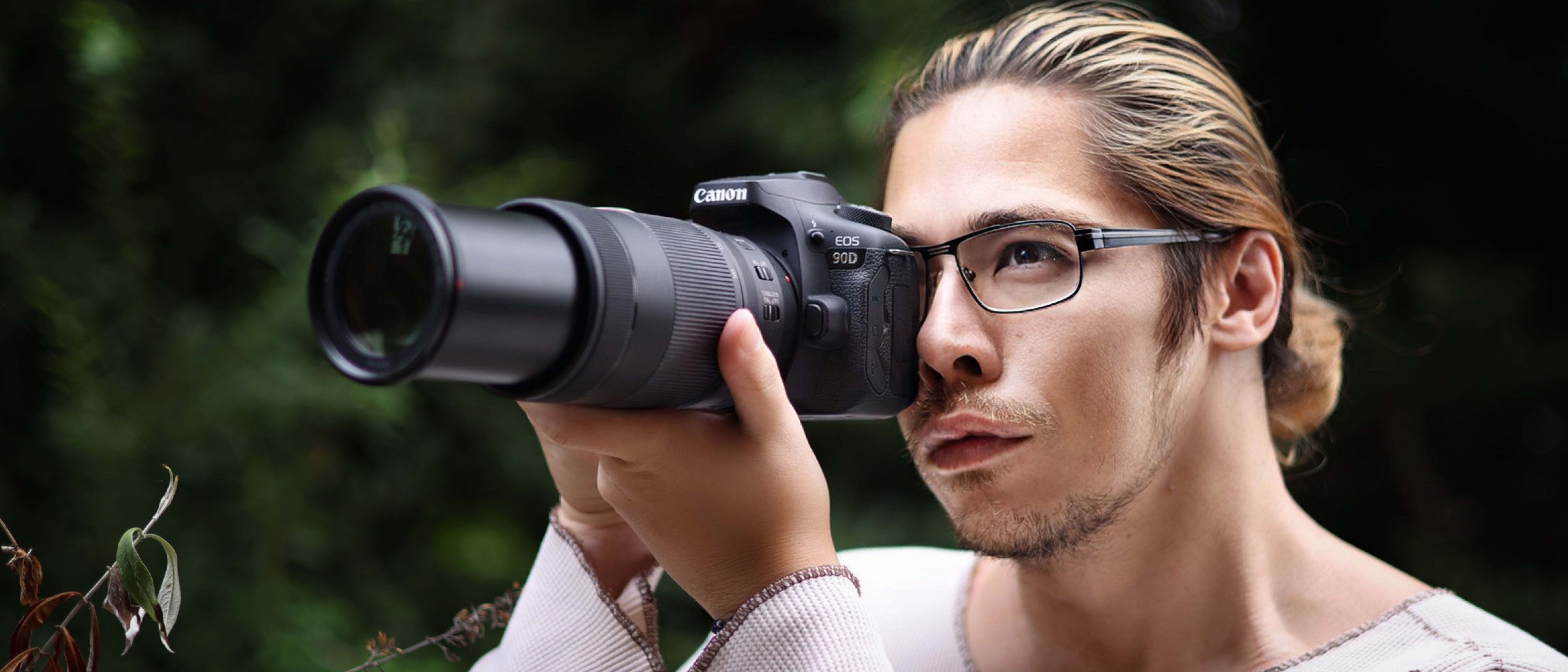Live Science Verdict
The Canon EOS 90D makes your lenses longer and gives you a staggering number of pixels to play with, making it ideal for wildlife.
Pros
- +
32.5MP resolution
- +
10fps bursts
- +
Uncropped 4K
- +
1.6x crop factor
Cons
- -
No stabilization
- -
Buffer isn't huge
- -
No C-AF in 120p
- -
Single card slot
Why you can trust Live Science
Type: DSLR
Sensor: 32.5MP APS-C
Lens mount: Canon EF / EF-S
ISO range: 100-25,600 (exp 51,200)
Viewfinder: Optical, 100% coverage
Video capability: 4K 30p / 1080p 120p
Weight: 1.55lbs
Size: 5.54 x 4.13 x 3.02 inches
Memory card type: 1x SD
While we’ve without doubt entered the mirrorless era of camera technology, the Canon EOS 90D proves that there is plenty of life left in the trusty DSLR. This APS-C camera packs more pixels than any of its rivals from Sony or Nikon, with a fearsome frame-rate that makes it tailor made for action shooting.
Factor in its 1.6x crop factor, which extends the effective focal length of your lenses by 60%, along with uncropped 4K video, and this has all the makings of one of the best wildlife photography cameras on the market.
With a 32.5MP image sensor – giving it greater resolution than any APS-C or full frame Canon DSLR except the EOS 5DS – the Canon EOS 90D captures images with a stunning level of detail, not to mention 4K video with impressive crispness.
The resolution works hand in hand with the crop factor, which makes your lenses even longer; a 300mm lens gives you an effective reach of 480mm on the 90D. So not only does it increase your focal range, the increased pixel count means that you can crop into your shots to fill the frame and retain great image quality.
The 90D is weather sealed, too, meaning that you can use it in challenging weather conditions (provided you’re using a similarly weather sealed lens) without worrying about damaging your gear.
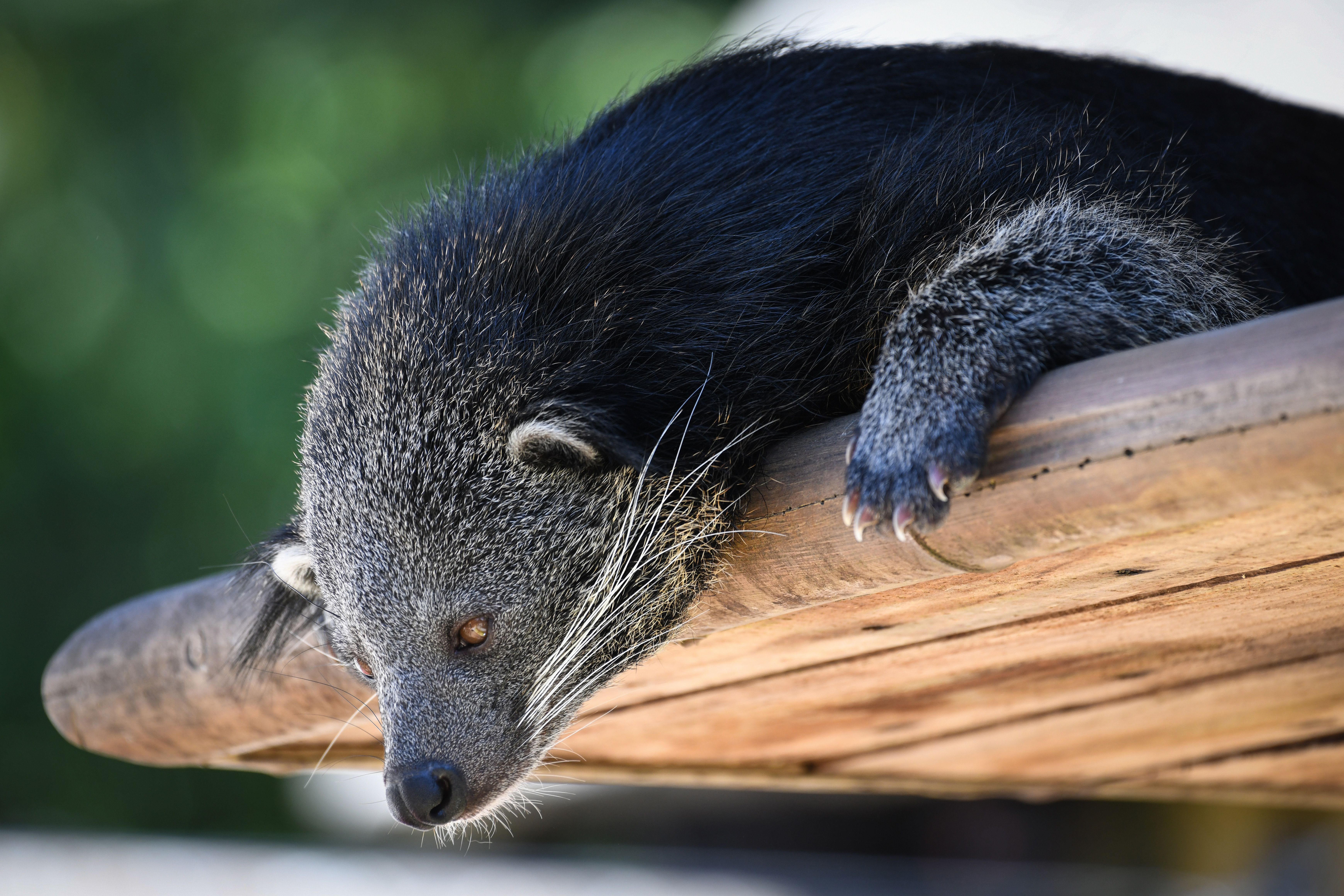
Canon EOS 90D: Design
While compactness is an advantage of mirrorless cameras in many situations, it's definitely a drawback when it comes to shooting sports, wildlife and action. When you're wielding large, long lenses to cover a lot of distance, you need a sturdy and substantial body to provide adequate purchase and balance.
Unlike APS-C (and even full frame) mirrorless cameras, the Canon EOS 90D has the requisite heft to make handling this kind of glass a breeze – something that somewhat offsets the lack of in-body image stabilization, which is one of the few marks against this camera.
Another huge plus point for the 90D is the fully articulating touchscreen. Where other manufacturers have been rather miserly with this feature, opting instead for the much more limiting tiltscreen (if the screen isn't fixed altogether), Canon has been quick to integrate it to this tier of camera.
Video shooters will find it invaluable, as will anyone who wants to shoot at high or low angles where a fixed screen or viewfinder would make it impossible.
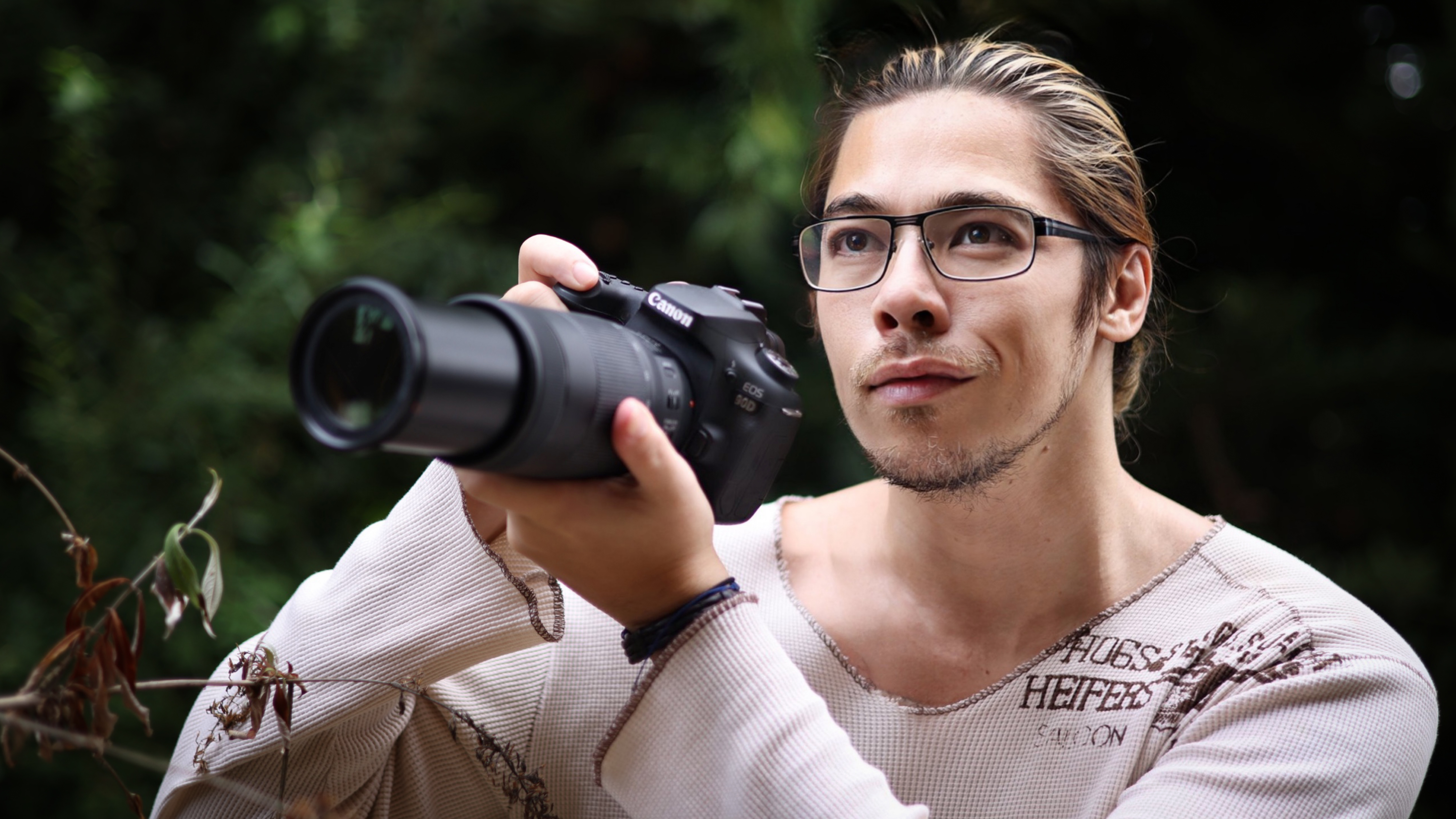
Canon EOS 90D: Functionality
Kit lens: Canon EF-S 18-135mm f/3.5-5.6 IS STM
Best wide lens: Tamron 10-24mm f/3.5-4.5 Di II VC HLD
Best zoom lens: Tamron 100-400mm f/4.5-6.3 Di VC USD
Spare battery type: Canon LP-E6NH
The 90D possesses just about everything you could ask of a sports and wildlife camera. Its rapid-fire 10 frames per second continuous shooting speed is enough to ensure that you don't miss a beat, even when shooting the twitchiest of beasts.
That's made possible by Canon's signature Dual Pixel CMOS AF system – the phase detect autofocus technology that offers eerily accurate subject detection and tracking, whether you're photographing still shots of animals or videoing human beings for vlogs.
Speaking of video, unlike many other APS-C bodies, the 90D boasts full-width sensor readout 4K – in other words, it captures 4K without cropping in on your footage. It also records 1080p video at up to 120p for true slow-motion shots.
It is, however, a shame that the camera only possesses a single SD card slot – something that will be off-putting to anyone who has had the misfortune of suffering a memory card failure.
An important point is that, while the 90D features the EF-S mount (Canon's DSLR APS-C lens format), the camera also natively accepts full frame EF lenses – meaning that you can make use of, for example, professional L-series lenses.

Canon EOS 90D: Performance
The backstory to the Canon EOS 90D is that it is the unofficial replacement for the EOS 7D Mark II as well as the 80D, so it combines the speed and shooting experience of both bodies.
One of the effects of this product line amalgamation is that the 90D benefits from a joystick, previously reserved for Canon's high-end and performance cameras. This is a huge benefit for shooting wildlife and sports, enabling quick and precise repositioning of focus points as you follow the action.
Of course, the rock-solid Dual Pixel AF does the lion's share of the work when it comes to following the action, though it's worth pointing out that it features a 45-point system instead of the 7D Mark II's slightly superior 65-point setup. It's also worth noting that, while the AF system is as robust in video as it is for stills, 120p slow-mo shooting does not feature continuous autofocus.
The 32.5MP sensor offers more pixels than any other APS-C camera from the Big Three manufacturers, whose sensors usually max out at 24MP. However, the smaller photosites do mean that there's a slight penalty to texture and detail as you ascend the ISO range.
What's key is, to get the best out of this camera, to use the best lenses you can. In order to squeeze the most out of the additional resolution (and counteract some of the aforementioned texture loss), don't rely on kit lenses – invest in great quality glass, and you'll get great results.
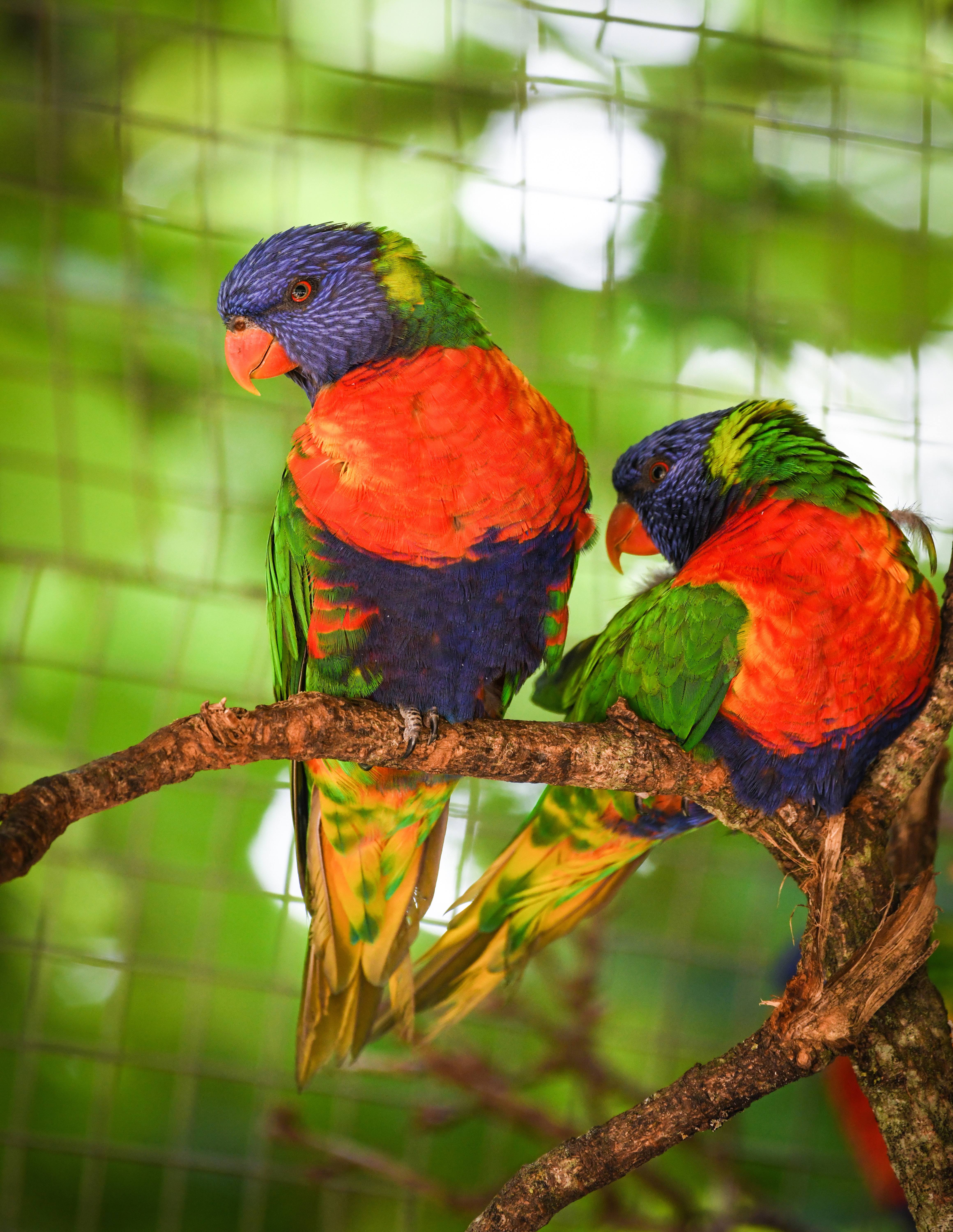
Should you buy the Canon EOS 90D?
if you're looking at an APS-C DSLR, the Canon EOS 90D is pretty much a no-brainer. Compared to its opposite number, the Nikon D500, the Canon has the advantage in almost every department.
Greater resolution, uncropped 4K capture, superior autofocus in stills and video, 120p slow-motion, greater crop factor (for greater focal length increase)… but there are a couple of areas where the D500 has the edge, namely a better buffer depth (for longer continuous bursts) and a second memory card slot.
Those aside, though, the Canon EOS 90D is where we would put our money for non-full frame or mirrorless options.
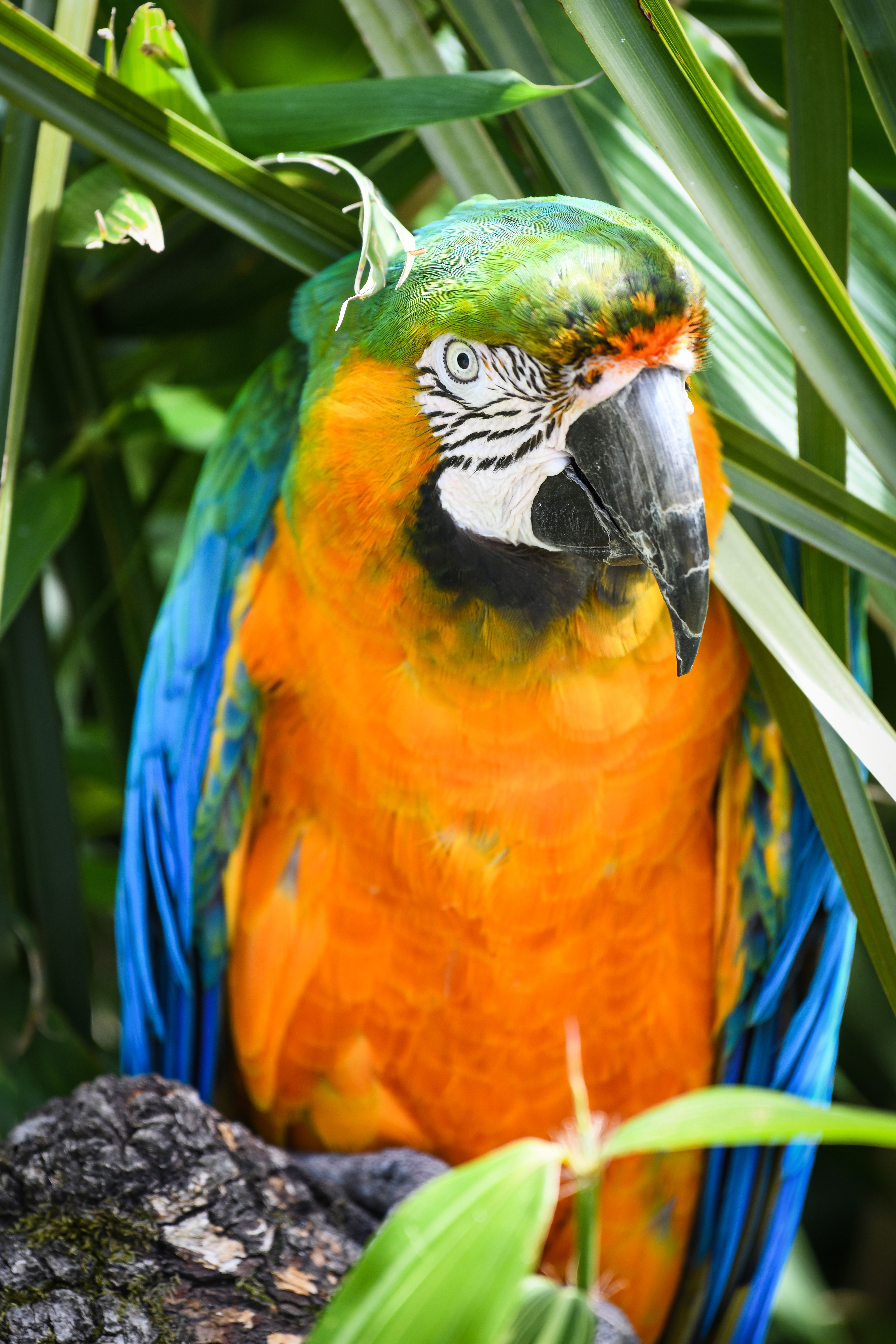
If this isn't for you
For all-in shooting and all-round ease of use, our choice has got to be the Nikon Coolpix P1000. If you have minimal or no photographic knowledge, or simply want to get great photos with no fuss – and a truly ridiculous 24-3000mm focal range – you simply can't beat this.
If you want to stick with a DSLR, but want the advantages of a full frame camera, the Nikon D850 offers a slightly slower burst rate but makes up for it with a 45.7MP sensor and killer ISO performance.
For the ultimate combination of resolution and speed, though, look no further than the Canon EOS R5, which features the best AF system in the business, 45MP resolution, 20fps burst shooting and up to 8K video.
The editor of Digital Camera World, James has 21 years experience as a magazine and web journalist. He has worked professionally in the photographic industry since 2014, when he started as an assistant to Damian McGillicuddy (who succeeded David Bailey as Principal Photographer for Olympus). In this time he shot for clients as diverse as Aston Martin Racing, Elinchrom and L'Oréal, in addition to shooting campaigns and product testing for Olympus, and providing training for professionals. This has led him to being a go-to expert on cameras and lenses, photographic and lighting tutorials, as well as industry analysis, news and rumors for publications such as Digital Camera Magazine, PhotoPlus: The Canon Magazine, N-Photo: The Nikon Magazine, Digital Photographer and Professional Imagemaker, as well as hosting workshops and demonstrations at The Photography Show. An Olympus (Micro Four Thirds) and Canon (full frame) shooter, he has a wealth of knowledge on cameras of all makes – and a particular fondness for vintage lenses and film cameras.
